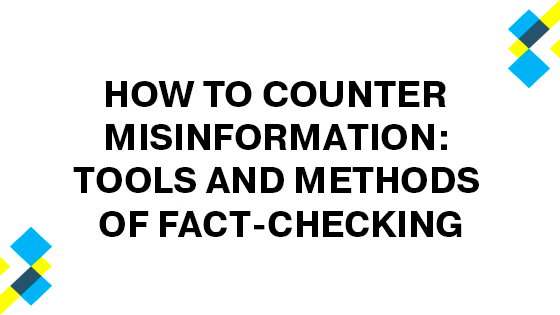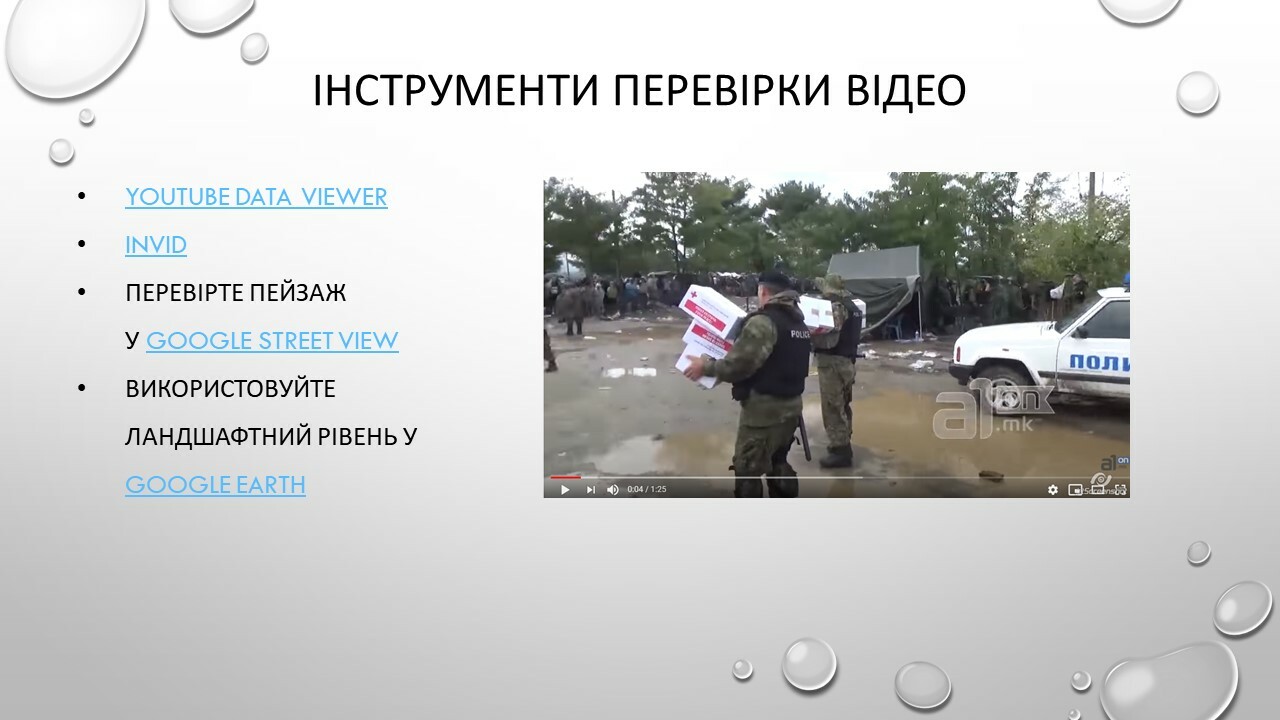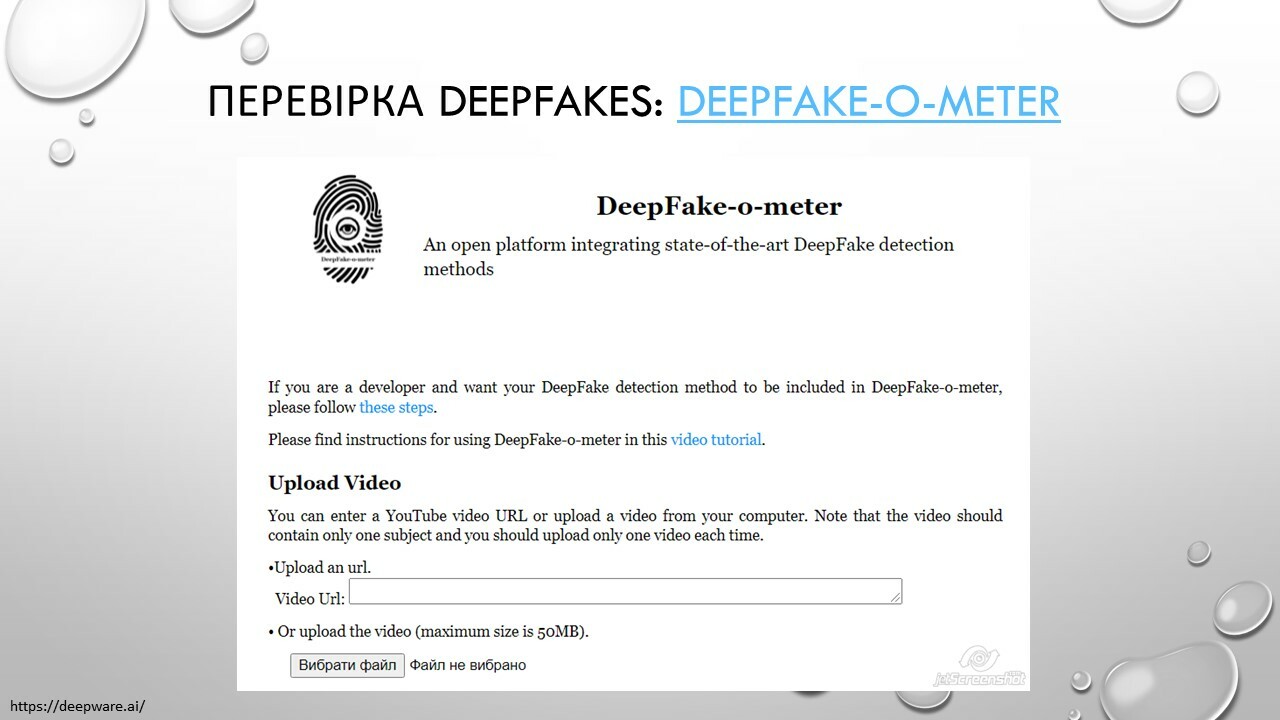How to counter misinformation: tools and methods of fact-checking
How to counter misinformation: tools and methods of fact-checking

The information space is full of misinformation. Even a person with developed critical thinking can fall for fakes, when flipping through a news feed, consuming them on the "background" in everyday affairs. How one can form a more conscious and rational approach to the perception of kilometers of news feeds?
Olga Yurkova, a member of the Tech & Society Communication Group, journalist and editor, shared tips on how to reduce the risk of being manipulated and verify information using tools and services, which work is based in particular on the achievements of artificial intelligence.
Photo manipulation
One of the easiest ways to create a fake is to manipulate the images. The most common methods of such manipulation include modifying images in Adobe Photoshop or other editing programs or applications, and publishing real photos taken at another time or place. In both cases, the origin of the photo can be checked and so forgery detected.
The following online photo verification tools are the easiest to use:
● Google Images
● TinEye.com
● ImgOps
The easiest way to check a photo is to use a reverse image search on Google, than the image download allows us to get detailed information about the circumstances under which it was made. This service has many useful features, such as finding similar images and other sizes of the same image. All you have to do is to grab the image with the mouse and drag it into the search bar on the Google imagery page, or copy and paste its URL that is available in the right-click menu on any picture on the Internet. In the "Tools / Image Search" menu, you can choose "Visually Similar" or "Other Dimensions". We do this primarily to find answers to the following questions:
• is the photo original or processed,
• what is the date of the first publication,
• what is actually shown.
Olga Yurkova, a member of the Tech & Society Communication Group, journalist and editor, shared tips on how to reduce the risk of being manipulated and verify information using tools and services, which work is based in particular on the achievements of artificial intelligence.
Photo manipulation
One of the easiest ways to create a fake is to manipulate the images. The most common methods of such manipulation include modifying images in Adobe Photoshop or other editing programs or applications, and publishing real photos taken at another time or place. In both cases, the origin of the photo can be checked and so forgery detected.
The following online photo verification tools are the easiest to use:
● Google Images
● TinEye.com
● ImgOps
The easiest way to check a photo is to use a reverse image search on Google, than the image download allows us to get detailed information about the circumstances under which it was made. This service has many useful features, such as finding similar images and other sizes of the same image. All you have to do is to grab the image with the mouse and drag it into the search bar on the Google imagery page, or copy and paste its URL that is available in the right-click menu on any picture on the Internet. In the "Tools / Image Search" menu, you can choose "Visually Similar" or "Other Dimensions". We do this primarily to find answers to the following questions:
• is the photo original or processed,
• what is the date of the first publication,
• what is actually shown.
Photo validation tools
How to use Google Images Google Images
TinEye is another reverse search tool. The great advantage of this resource over Google is that it allows you to sort the results in chronological order. TinEye also recognizes identical or edited copies of images. In this way, you can find cropped or mounted versions of the same photo, as well as trace changes in the picture, if they were: say, it was completed with some details or inscriptions. In addition, the sites, where the photo was posted, may suggest details about its content.

How to use TinEye
ImgOps is a service where almost all the necessary tools for working with online images are gathered in one place - not only for testing, but also for editing. If you plan to check photos regularly, this kind of catalog of links to other resources, organized according to needs, will help you with this.
Here you can find links to metadata validation services or various image reverse search tools. You should try several services - for example, search for images or metadata on multiple resources. Their search algorithms, and hence the results, may differ. And if you do not find a tool, you can customize the directory and add your own links in the bottom line.
Getting started with ImgOps is as easy as with previous services - inserting a URL link to an image or "pulling" a file from your computer.
Getting started with ImgOps is as easy as with previous services - inserting a URL link to an image or "pulling" a file from your computer.

How to use ImgOps
Video manipulation
Video manipulations are just as common as those with photos. However, exposing fake videos is much more difficult and time consuming. To begin with, it is worth watching them. Sometimes this will be enough to point out inconsistencies: inaccurate gluing, distorted proportions or strange moments.
One can recommend the following video validation tools:
● GOOGLE STREET VIEW
● GOOGLE EARTH
● INVID

Video validation tools
Pay attention to details: shadows, reflections in the glass, sharpness and outlines of various elements. The country and city of the filming can be identified by car numbers, road signs, store signs and street names. If there are unusual buildings in the photo, view them in GOOGLE STREET VIEW or use the landscape level GOOGLE EARTH to compare the probable and actual location.
Another lifehack is to check the weather at the specified time in this particular place. The archives of sites with weather forecasts help in this. If it has been raining all day and the sun is shining on the video, it is not credible and requires further verification.
To learn more about video use the powerful reverse lookup tool INVID. This is a browser plug-in that has a lot of free functionality. It can help you check videos on social networks: Twitter, Facebook, YouTube. In particular, it allows you to reverse search for screenshots in search engines Google, Yandex, Tineye, Bing and Reddit. To check, copy the link to the video, paste it into the Keyframes window in InVid and click "Submit".
Another lifehack is to check the weather at the specified time in this particular place. The archives of sites with weather forecasts help in this. If it has been raining all day and the sun is shining on the video, it is not credible and requires further verification.
To learn more about video use the powerful reverse lookup tool INVID. This is a browser plug-in that has a lot of free functionality. It can help you check videos on social networks: Twitter, Facebook, YouTube. In particular, it allows you to reverse search for screenshots in search engines Google, Yandex, Tineye, Bing and Reddit. To check, copy the link to the video, paste it into the Keyframes window in InVid and click "Submit".
This service automatically takes screenshots of videos. You can then use these screenshots to reverse your image search using five search machines and find the original video. However, the effectiveness of such a search requires some research - to take a few screenshots and experiment with keywords: those that are automatically offered by search machines, often interfere with the search.
InVid also includes photo validation tools, including the Google Images and TinEye tools described above, and many more. Each tool contains a short video guide to use.
InVid also includes photo validation tools, including the Google Images and TinEye tools described above, and many more. Each tool contains a short video guide to use.

How to use InVid
Detection of the deepfakes
Deepfake technology, a technique for synthesizing human images based on artificial intelligence, is becoming increasingly popular not only among cybercriminals, but also ordinary users. A fake video of a person is created from elements of the person's appearance and voice that are already online. So the more information about a person is available online, the easier it is to create a fake video with him. So far, many deepfakes can be distinguished simply visually, when in some parts of the video there are some inaccuracies: you can see that the person's face is not symmetrical, the wrong shape of the pupil, mismatch of skin color, there may be noticeable flicker and others.
There are now many tools for checking deepfakes that do so so far with varying degrees of success. Large platforms such as Adobe and Microsoft have announced the development of such tools, but they are not yet widely available. One such service is DeepFake-o-meter, which scans videos from YouTube and looks for signs of manipulation on the face of man, created by artificial intelligence.

How to use DeepFake-o-meter
Detection of artificial intelligence generated text
Recently, artificial intelligence technologies are often used to work with texts. One of the tools for detecting manipulations with the text information is the Giant Language service.
The basic concept of the tool is quite simple: a text written by a person is much more unpredictable in the way it is structured.
Given the semantic context, the program predicts which words are most likely to appear in a sentence, essentially writing your own text. If the words in the sample under test correspond to the 10, 100 or 1000 most probable words, the indicator turns green, yellow or red, respectively, and the rest of the words turn purple. In fact, the program uses its own predictive text as a guide for detecting artificially generated content.

How to use Giant Language
These are just the simplest quick ways that anyone can use to verify information. From this point you can start a deeper acquaintance with the tools of fact-checking in any of the proposed areas.
Published in February 2023, translated from Ukrainian.
Published in February 2023, translated from Ukrainian.
© 2021-2023 Tech&Society Communication group. All rights reserved.




